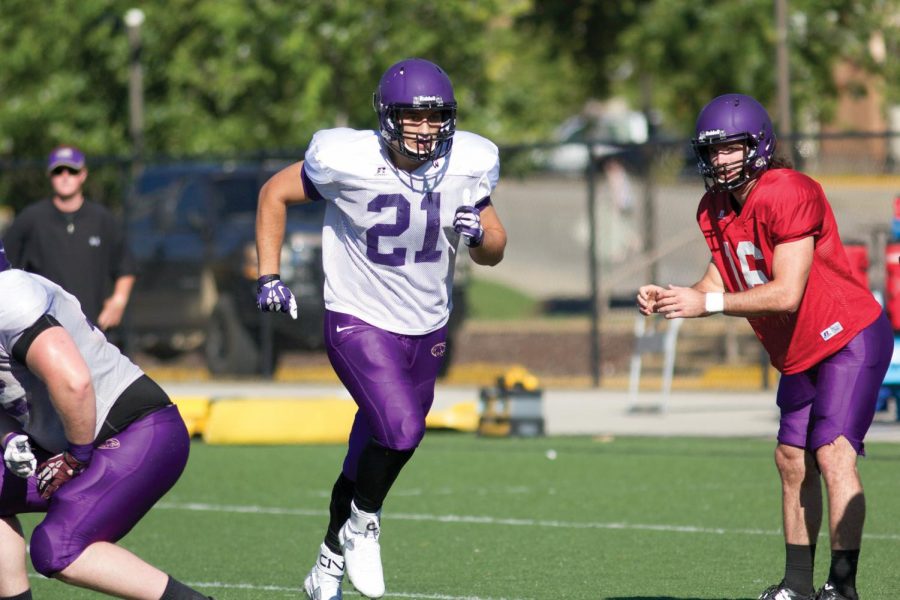UNA walk-ons strive for scholarship opportunities
September 27, 2015
With nine scholarships available to over 25 baseball players and 36 scholarships available to over 100 football players, earning a scholarship as a walk-on athlete is next to impossible.
Junior colleges offered senior slot receiver Nolan Coffey scholarships in football, baseball and basketball, but he wanted to attend UNA, he said.
He earned a Leadership Scholarship, he said, and decided not to participate in sports but focus on his academics instead.
Coffey said watching from the stands was not as rewarding as playing.
“It was tough thinking that you’re good enough to be out there and want to be out there,” he said.
UNA Offensive Coordinator Cody Gross encouraged him to work out with the team during the summer, he said. His junior year he walked on, and within a year, was offered an athletic scholarship.
As a walk-on, Coffey said he feels he has to work harder to prove his ability not only to himself, but also to others.
“You come in here and have to start from the bottom,” he said. “You have guys who have been here — guys they’ve recruited personally.”
Coffey said he felt his teammates accepted him immediately.
“They did a good job here at UNA of not treating the walk-ons any differently than the scholarship players,” he said.
Coffey said he is proud he did well enough to earn a scholarship within a year.
“We have a really good team and a successful football program,” he said. “It’s not a team you walk on and get playing time right away.”
Head coach Bobby Wallace said the football program encourages walk-ons and has had a lot of success with them.
Many great players have been overlooked in high school, he said. Maybe their skills developed late or their team as a whole was not good enough to attract recruiters.
Wallace said he would rather reward a player who has walked on and proven himself in academics, talent and character than go out and look for players.
“Nolan Coffey is a contributor to our team and fits all of that criteria,” he said.
Offering scholarships to Division II athletes is different from Division I, he said.
“In Division I, they’re limited to 85 (scholarships),” he said. “You’re either on full scholarship or no scholarship. In Division II, we work on 36 equivalences, which is the dollar amount of 36 full scholarships.”
This means as long as money is available, they can have as many athletes on scholarship as they see fit, he said.
If a player shows progress within a year and contributes to the team, he usually gets put on scholarship, he said.
Baseball coach Mike Keehn said baseball does not see as many walk-ons as football.
“There are zero full-ride baseball scholarships,” he said. “We try to give a little bit here and there and help out as much as we can.”
A player’s contribution to the team and how well he does in school determines whether or not he is offered a scholarship, he said.
Keehn said senior second baseman Kyle Crabtree “came out of nowhere.”
“He decided to come out and then earned a starting position with us last year,” he said. “He had a really good year. He earned the scholarship for this year.”
After playing football for three years on a scholarship he earned his high school senior year, Crabtree decided to make the switch to baseball.
Being a walk-on has been challenging, he said.
“You can’t take a day off if you’re really wanting to get where you want to be,” Crabtree said. “That’s the tough part about being a walk on and having to prove yourself every day.”


